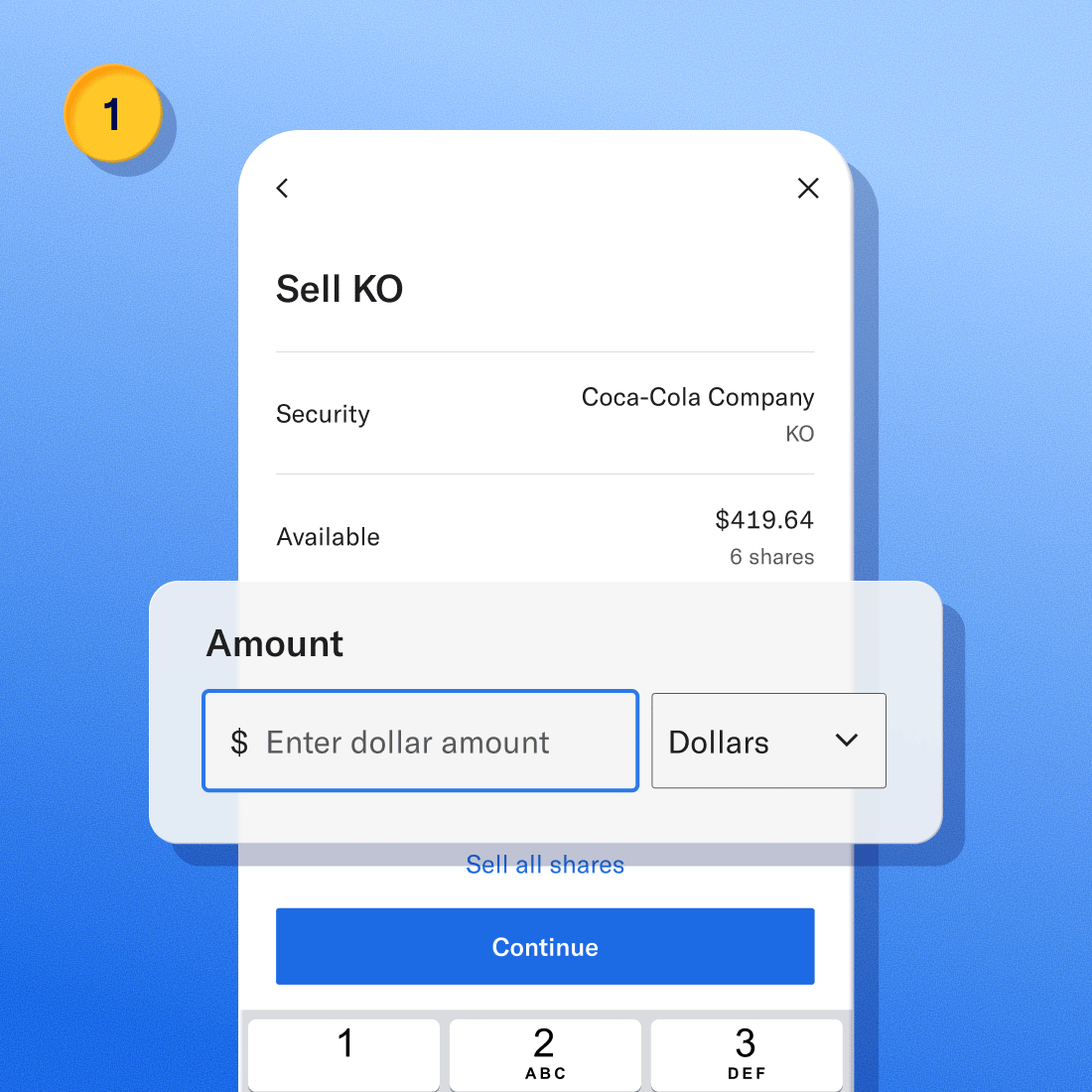Key takeaways
- Selling stocks and ETFs at a gain creates a tax bill, but most apps don’t show you the impact until it’s too late.
- Betterment offers Tax Impact Preview to give you upfront transparency before you sell.
- By showing the tax preview, you have the insights needed to help avoid short-term capital gains taxes by choosing not to sell.
- Tax Impact Preview is free to use, provides near real-time tax estimates, and helps you make informed investing decisions.
- You can use it with both self-directed and automated accounts at Betterment.
Selling stocks and ETFs for a profit usually results in having to pay taxes. The thing is, most investing apps don’t show you the tax implications when you go to sell. You end up seeing your tax bill when you file taxes months later.
This lack of transparency didn’t sit well with us at Betterment, so we did something about it.
We built Tax Impact Preview.
Unlike other investing apps, our Tax Impact Preview shows you the estimated amount of taxes you may owe on short-term (assets held for a year or less) and long-term capital gains prior to selling a stock or ETF.
Three things to know about Betterment’s Tax Impact Preview
Before you use Tax Impact Preview, here are three things to know about how it can help you make investing decisions:
- It’s free to use: Tax Impact Preview is available for all Betterment customers at no additional cost on self-directed and automated investing accounts.
- It provides a near real-time tax estimate: You get a near real-time tax estimate based on the latest market data for withdrawals or allocation changes before you confirm the transaction.
- It helps you make informed decisions: It’s important to note that Tax Impact Preview shows you key information to make informed decisions. The preview can be useful in different scenarios, including when you sell a stock or ETF, change asset allocation, or during a Roth conversion—it doesn’t force you to do anything. It empowers you to make investment decisions that fit your goals.
How Betterment’s Tax Impact Preview works
Betterment’s Tax Impact Preview can be used with all taxable investing accounts. That includes both self-directed investing (buying and selling individual stocks and ETFs) and automated investing (Betterment’s pre-built portfolios). You’ll see the preview when you go to sell a stock or ETF, or when you initiate a sale within a portfolio.
Tax impact preview with self-directed investing
To see your tax impact preview, follow these steps to initiate a sell order:
- Enter the number of shares or dollar amount you want to sell in a stock or ETF and click continue.
- On the sell review screen, select “Estimated taxes owed” or “Estimated taxes saved” to see a detailed preview.
- Review the tax preview and use the information to decide if you want to move forward with the sale.

When reviewing the estimated tax impact, you can see long-term and short-term capital gains along with any washed loss amount. These pieces of information can help you decide if moving forward with the sale is best for your tax situation.
Ready to explore self-directed investing?

Tax impact preview with automated investing
With Betterment’s automated investing portfolios, when you initiate a sale of securities (a withdrawal or allocation change), our algorithms first determine which ETFs to sell (rebalancing you in the process, by first selling the overweight components of your portfolio). Within each ETF, our lot selection algorithm, which we call TaxMin, is designed to select the most tax-efficient lots, selling losses first, and short-term gains last.
To use Tax Impact Preview, you can select the option to view the estimated tax impact when you initiate an allocation change or withdrawal. This will give you detailed estimates of expected gains and/or losses, breaking them down by short and long-term. If your transaction results in a net gain, we estimate the maximum tax you might owe. And if it results in a loss, you could benefit from tax loss harvesting.
Why is it “estimated tax impact”?
The tax owed is an estimate because the precise tax owed depends on many circumstances specific to you, including your tax bracket and the presence of past and future capital gains or losses for the year across all of your investment accounts. We use the highest applicable rates, to give you an upper-bound estimate.
The gains and losses are also estimates, as these depend on the exact price that the various ETFs and stocks will sell at. If the estimate is done after market close, the prices are sure to move a bit by the time the market opens. Even during the day, time will pass between the preview and the trades, and prices will shift, so it isn’t possible for the estimates to be 100% accurate to the outcome.
Finally, while we are able to factor in wash sale implications from prior purchases in your Betterment account, the estimates could change substantially due to future purchases, and we do not factor in activity in non-Betterment accounts.
That is why every number we show you, while useful, is an estimate. Tax Impact Preview is not tax advice, and you should consult a tax professional on how these estimates apply to your individual situation.
Invest with transparency that puts you in control
With Betterment’s Tax Impact Preview, you can finally see a fuller picture before you sell. Instead of being surprised by a tax bill months later, you’ll know your estimated short- and long-term gains upfront—helping you make smarter, more tax-efficient moves.
Whether you invest on your own or through Betterment’s automated portfolios, Tax Impact Preview is designed to give you the clarity and confidence to stay on track toward your financial goals.




